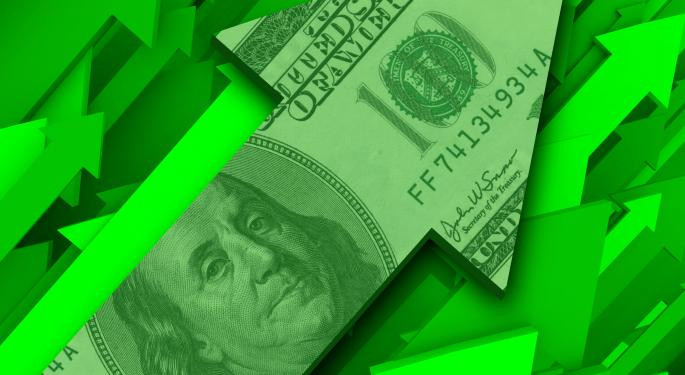
The last month of spring, the most blooming and green, the greenback met on the rise. The US currency literally blossomed before the Federal Reserve meeting, remaining at 20-year highs recorded since the end of April.
In the morning trading on Monday, May 2, the greenback slightly exceeded the indicator of Friday, April 29, while remaining near 20-year highs. The greenback remains confident ahead of the Fed meeting scheduled for Wednesday, May 4, moving in an upward spiral. At the same time, the European currency is still an outsider. The euro was trading near 1.0540 on the first day of the new week, but could not resist and slipped below this mark.
Market participants are focused on the Fed's upcoming meeting. On the agenda is a key issue related to the further dynamics of the interest rate. Markets expect the central bank to raise the rate by 50 basis points (bp) at once. Many market participants are kept in suspense by uncertainty about further comments by Fed Chairman Jerome Powell. Investors are afraid of Powell's unnecessarily hawkish tone in his closing speech on rates. The markets are set for the Fed's aggressive increase. This is not surprising: in an attempt to tame the off-scale inflation, the central bank uses any measures.
The current expectations of traders and investors regarding the Fed are in sharp contrast to the policy of slow tightening of the monetary policy by the European Central Bank. Adding fuel to the fire are growing concerns about the negative impact of the Russian-Ukrainian conflict on the eurozone economy. Against this background, the European currency has noticeably weakened against the American one. As a result, the euro turned out to be at the levels of 2017, when its sharp subsidence was recorded. At the same time, ECB Vice President Luis de Guindos said earlier that a rate hike in July is "possible, but unlikely." These comments alerted investors and raised doubts about the prospects of the euro recovery.
The forecasts for the US currency are more optimistic. According to UBS Global Wealth Management analysts, the greenback will continue to strengthen against the euro in the near future. USD is supported by the FOMC's hawkish position and current geopolitical risks. In the short term, the EUR/USD pair is expected to rally. UBS Global does not rule out a takeoff to 1.0800 in the near future.Analyzing the technical situation for the EUR/USD pair, many analysts note that the pair could not stay near 1.0550 and maintain a bullish momentum against the background of flight from risks. The 1.0500 level has currently become a psychologically important support level for the pair. In case of a breakdown, it is possible to fall to 1.0470 – a multi-year low recorded on April 26.
According to experts, for further development, the EUR/USD pair needs to rise above the static level of 1.0560, using it as support. Currently, this is extremely difficult to implement. The EUR/USD pair was trading at 1.0505 on the morning of Tuesday, May 3, trying to climb higher with varying success.

Many experts do not dare to make positive forecasts in the current situation. Among them are analysts at UBS Global Wealth Management, who have worsened their calculations for the EUR/USD pair to 1.0500 for June, to 1.0600 for September, to 1.0800 for December 2022 and to 1.1000 for March 2023. Earlier, BNP Paribas currency strategists said that the fall of the euro to a five-year low below 1.0500 was facilitated by powerful speculative cash flows, and not concerns about the deterioration of economic prospects.
The dollar took advantage of this, as it was able to settle in the leading positions. According to experts, even possible negative NonFarm Payrolls will not prevent the dollar's growth. Markets are expecting these reports on Friday, May 6. Currency strategists are confident that after a small Friday pullback, the USD will continue to grow next week.





















